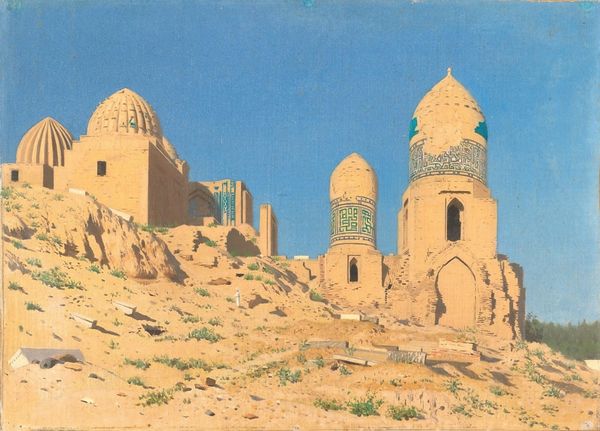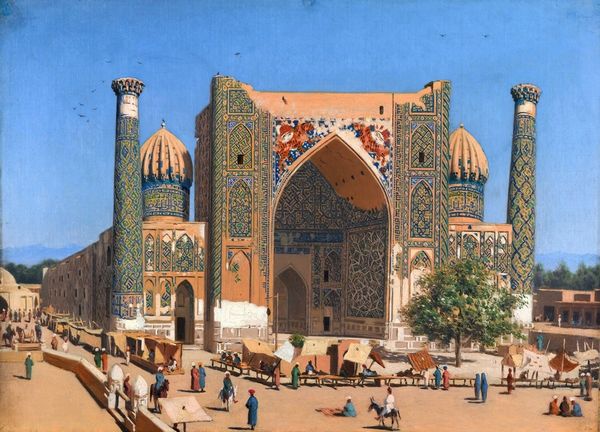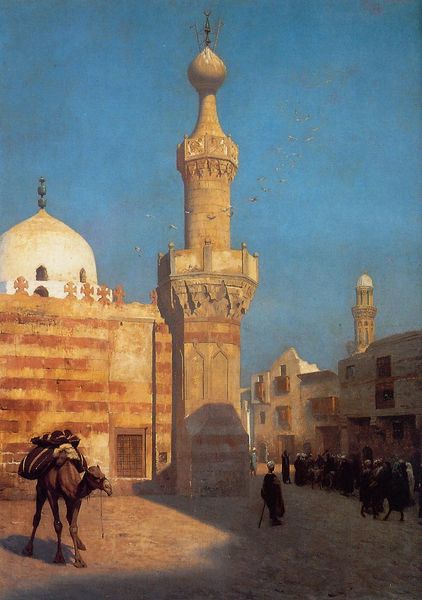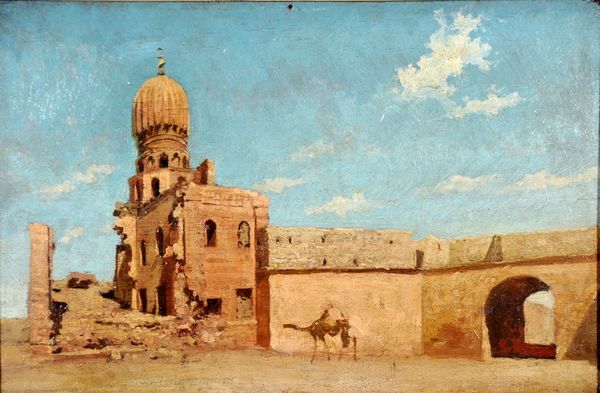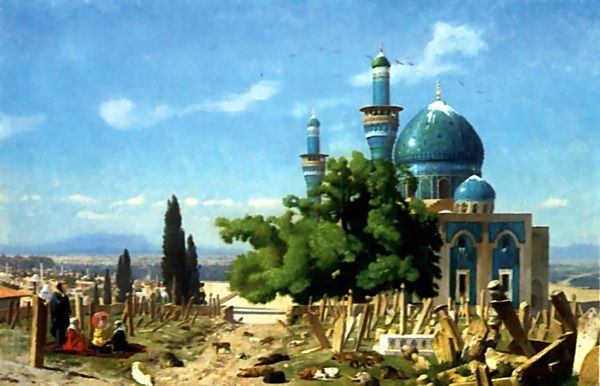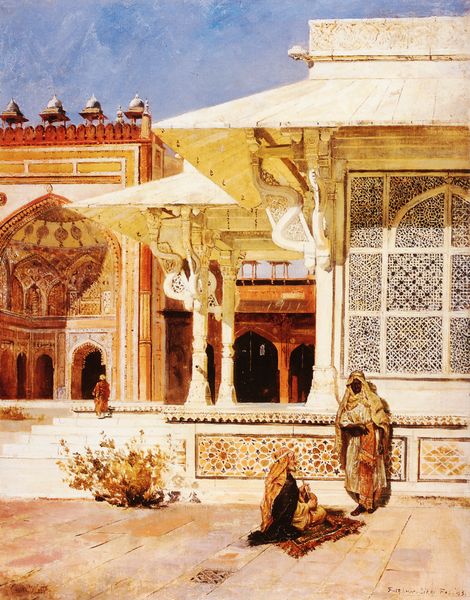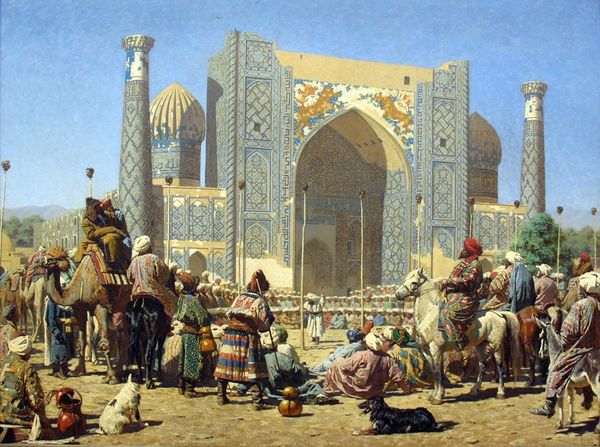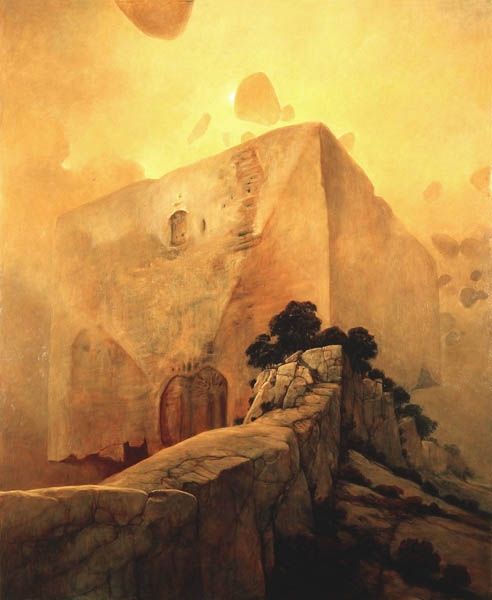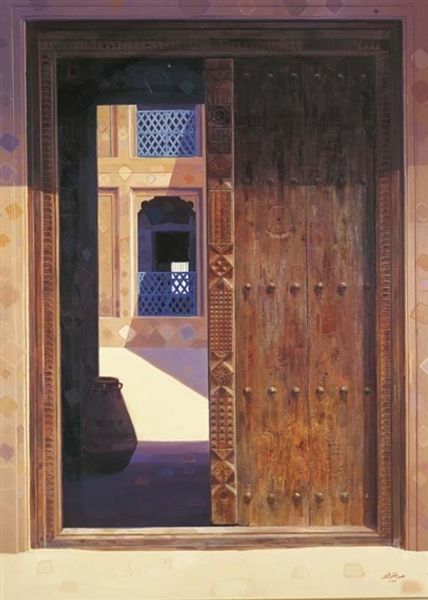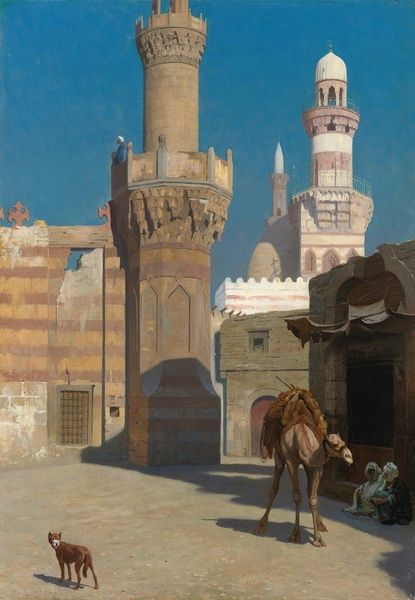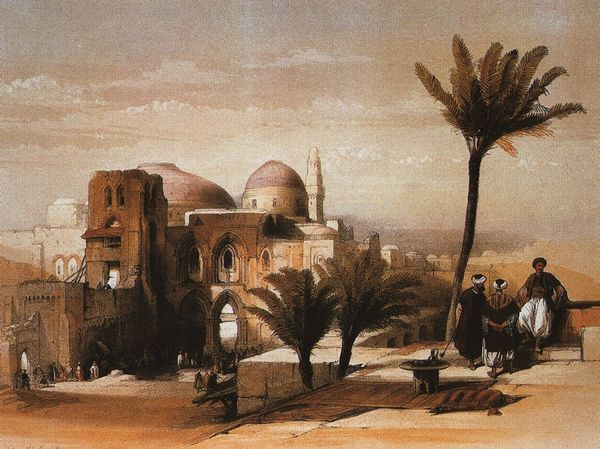
oil-paint
#
oil-paint
#
landscape
#
oil painting
#
orientalism
#
cityscape
#
islamic-art
#
history-painting
#
realism
Copyright: Public Domain: Artvee
Editor: This is Vasily Vereshchagin's "Gur Emir Mausoleum, Samarkand," painted in oil sometime between 1869 and 1870. It gives me such a feeling of faded glory; the architecture is imposing, yet clearly weathered. What catches your eye in this piece? Curator: Oh, Vereshchagin. He’s one of those artists who just *gets* light. Don’t you feel that intense, almost palpable heat radiating from the canvas? And it's more than just heat, isn't it? There's this incredible dance between grandeur and decay. Look at the vibrant blue dome against the crumbling brickwork – it's a visual poem about time itself. Did Vereshchagin seek to explore how history weathers monuments *and* souls, perhaps? Editor: That's beautiful, the poem about time! The contrast definitely makes it a painting of contradictions, though. Such vibrancy with the blue tilework, but ruin in the rest of the structure. Do you think that reflects the moment in time that Vereshchagin was capturing? Curator: Precisely! He was a realist, keen on capturing the raw, unfiltered reality around him. The Russian Empire was expanding into Central Asia. Vereshchagin’s paintings were a way to both document and question this expansion – romanticizing *and* critiquing colonialism, sometimes in the same brushstroke! The figures add to it, a sense of lived history amidst the grandeur. Editor: I see that tension so clearly now. I hadn't considered the political context initially, but it really changes the way I read the painting. Thanks! Curator: My pleasure! Isn't it wonderful how one painting can hold so many stories, if we just learn how to listen?
Comments
No comments
Be the first to comment and join the conversation on the ultimate creative platform.
